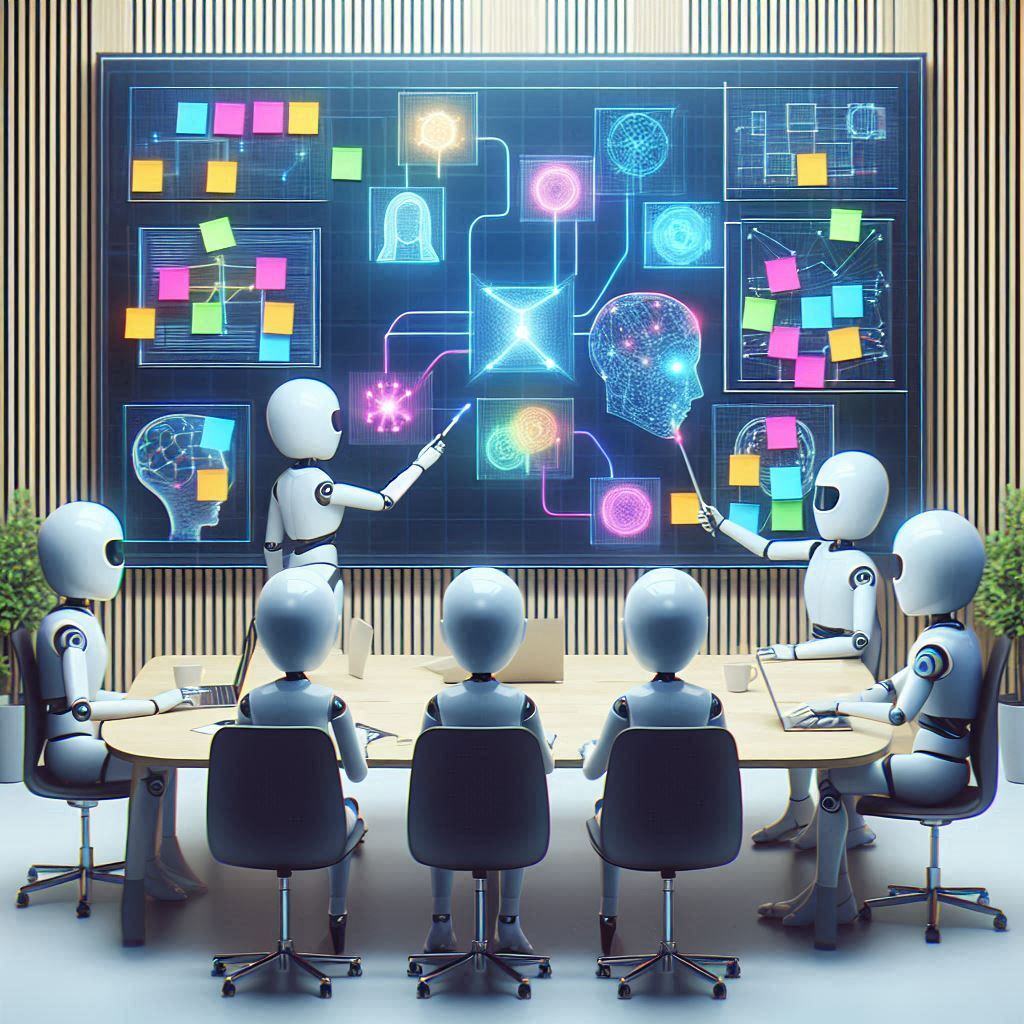Reactive Architectures for AI Agents
Designing systems that are adaptive, reliable, and scalable is crucial. Reactive architectures play a vital role in achieving these goals, especially...
Explore AI agent architectures to see how intelligent systems are built to perceive, reason, learn, and act. Learn about key components, frameworks, and trends.
AI agents are the driving force behind the creation of intelligent, autonomous systems. These systems are revolutionizing industries, from self-driving cars navigating complex environments to recommendation engines personalizing user experiences. The architecture of these agents—the blueprint for their internal workings—is fundamental to their behavior, learning, decision-making, and ultimately, their success. In this in-depth guide, we will unravel the intricacies of AI agent architectures, exploring their key components, popular frameworks, and the emerging trends that are shaping the future of intelligent systems.
AI agent architectures, while varied, share several core components that are essential to their functionality:
Perception Module: This module acts as the agent's senses, collecting and interpreting data from its environment. In a self-driving car, this might involve cameras, lidar, and radar; for a financial trading agent, it could be stock market data or news feeds. The perception module processes this raw data into a form that the agent can understand.
Knowledge Base: This component serves as the agent's memory and understanding of the world. It contains information about the environment, the agent's goals, and the relationships between objects and events. This knowledge is crucial for the agent to make informed decisions and take appropriate actions.
Reasoning Engine: The heart of the AI agent, the reasoning engine, is responsible for making decisions. It takes the perceived information from the environment and the knowledge stored in the knowledge base and uses this to determine the best course of action. Reasoning engines can employ a variety of techniques, including rule-based systems, machine learning models, or search algorithms.
Learning Module: For many AI agents, the ability to learn and adapt is paramount. The learning module enables the agent to refine its knowledge, improve its decision-making, and optimize its actions over time. Machine learning algorithms, particularly reinforcement learning, are often employed here to allow the agent to learn from its experiences and become more proficient at its tasks.
Action Module: Once the reasoning engine has made a decision, the action module translates that decision into actions in the environment. For a robot, this could be a movement; for a recommendation engine, it might be displaying a suggested product to a user.
AI agent architectures come in various flavors, each with its own strengths and weaknesses:
Reactive Architectures: These agents are purely reactive, making decisions based solely on the current situation without considering past experiences. They are simple but effective for tasks with limited complexity. A classic example is a thermostat, which simply turns the heating or cooling on or off based on the current temperature.
Deliberative Architectures: These agents maintain an internal model of the world, enabling them to plan and reason about the future consequences of their actions. They are more sophisticated than reactive agents but can be computationally demanding. Chess-playing AIs often use deliberative architectures to evaluate potential moves and their long-term implications.
Belief-Desire-Intention (BDI) Architectures: A type of deliberative architecture, BDI agents explicitly model their beliefs, desires, and intentions. This allows for more complex reasoning and decision-making, often found in intelligent personal assistants or virtual characters in video games.
Hybrid Architectures: These architectures combine elements of both reactive and deliberative approaches, balancing the need for quick reactions with the ability to plan for the future. Autonomous driving systems, for instance, must react quickly to changing traffic conditions while also planning a route to a destination.
1. Self-Driving Cars:
2. AI in Financial Trading:
3. Healthcare Diagnosis Systems:
The field of AI agent architecture is evolving rapidly, thanks to advancements in machine learning, reinforcement learning, and the availability of massive datasets:
Deep Reinforcement Learning: This approach allows agents to learn complex behaviors through trial and error, opening up possibilities in robotics and autonomous systems.
Explainable AI: Developing techniques to make the decision-making processes of AI agents more transparent and understandable.
By understanding these fundamental concepts and exploring the latest trends, we can better appreciate the transformative potential of AI and its impact on our lives.
AI agent architectures are the building blocks for creating intelligent systems that can perceive, reason, learn, and act in dynamic environments. As this field continues to advance, we can expect to see even more capable and sophisticated AI agents revolutionizing industries and enhancing our lives. By understanding the fundamental concepts and exploring the latest trends, we can better appreciate the transformative potential of AI and its impact on the future of technology.
Unlock the potential of AI with Integrail.ai. Try our platform today and get $10 in token credits for free. Build your first multi-agent system effortlessly and see how Integrail can transform your AI development.

Designing systems that are adaptive, reliable, and scalable is crucial. Reactive architectures play a vital role in achieving these goals, especially...

Artificial intelligence (AI) has made significant strides in recent years, but it's not without its challenges. One such challenge is the occurrence...

Artificial intelligence is becoming smarter every day, but what if your AI could actually remember past conversations and use that knowledge to offer...
Start your journey with Integrail

Try AI Studio by Integrail FREE and start building AI applications without coding.

NEW White Paper: Discover how AI Studio accelerates your workflows